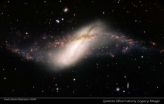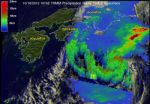(Press-News.org) People are more likely to install a solar panel on their home if their neighbors have one, according to a Yale and New York University study in the journal Marketing Science.
The researchers studied clusters of solar installations throughout California from January 2001 to December 2011 and found that residents of a particular zip code are more likely to install solar panels if they already exist in that zip code and on their street.
"We looked at the influence that the number of cumulative adoptions—the number of people who already installed solar panels in a zip code—had on the probability there would be a new adoption in that zip code," said Kenneth Gillingham, the study's co-author and assistant professor of economics at the Yale School of Forestry & Environmental Studies. "Our approach controls for a variety of other possible explanations, including clustering of environmental preferences or marketing activity."
They calculated that 10 extra installations in a zip code increase the probability of an adoption by 7.8 percent. If there is a 10 percent increase in the total number of people with solar panels in a zip code—the "installed base"—there will be a 54 percent increase in the adoption of solar panels.
"These results provide clear evidence of a statistically and economically significant effect," said Bryan Bollinger, the other co-author and assistant professor of marketing at New York University Stern School of Business.
The study also shows that the visibility of the panels and word-of-mouth led to larger installations. "If my neighbor installs a solar panel and tells me he's saving money and he's really excited about it, it's likely I'll go ahead and do the same thing," said Gillingham. "Then there are others who'll install because they don't want to be one-upped by their neighbors."
The researchers found that white males between the ages of 45 and 65 who have a 30-minute commute and home repairs were associated with higher adoption rates. Gillingham suggested that a disproportionate number of engineers working in Silicon Valley may explain the result. In addition, larger households and people with longer commutes were more exposed to solar installations, thus more likely to adopt the technology, compared to people who carpooled and lived in smaller households.
"These findings have clear implications for marketers who are striving to reduce the high cost of consumer acquisition in the solar photovoltaic market," said Bollinger.
In January 2006 the California Public Utilities Commission established the California Solar Initiative, a $3.3 billion, 10-year rebate program encouraging the installation of 3,000 megawatts of solar infrastructure over the ensuing decade. These subsidies, according to the authors, have increased the number of solar installations to 17,000 in 2010 from fewer than 1,000 in 2001. The authors used the 85,046 requested residential installations during that time in their calculations.
"Our finding of an increasing effect of new installations in a zip code suggests that targeting marketing efforts in areas that already have some installations is a promising strategy," said Gillingham.
INFORMATION:
The paper, "Peer Effects in the Diffusion of Solar Photovoltaic Panels," is available at http://mktsci.journal.informs.org/content/early/2012/09/20/mksc.1120.0727.abstract.
END
It's fall football season, when fight songs and shouted play calls fill stadiums across the country. Another less rousing sound sometimes accompanies football games: the sharp crack of helmet-to-helmet collisions. Hard collisions can lead to player concussions, but the physics of how the impact of a helmet hit transfers to the brain are not well understood. A research team from the U.S. Naval Academy in Annapolis, Md., has created a simplified experimental model of the brain and skull inside a helmet during a helmet-to-helmet collision. The model illustrates how the fast ...
Global temperatures directly affect the acidity of the ocean, which in turn changes the acoustical properties of sea water. New research suggests that global warming may give Earth's oceans the same hi-fi sound qualities they had more than 100 million years ago, during the Age of the Dinosaurs.
The reason for this surprising communication upgrade is that whales vocalize in the low-frequency sound range, typically less than 200 hertz, and the new research predicts that by the year 2100, global warming will acidify saltwater sufficiently to make low-frequency sound near ...
Noise can be distracting, especially to a person trying to concentrate on a difficult task. Studying annoying noises helps architects design better building environments and policy makers choose effective noise regulations. To better understand how short noise bursts affect humans' mental state, researchers from the University of Nebraska – Lincoln played quarter-second-long white noise clips to test subjects as they worked on arithmetic problems. The researchers noticed a slight general trend toward lower performance when louder noises were played, and also identified ...
Miss hitting the "sweet spot" on a baseball bat and the resulting vibrations can zing your hands. Bat companies have tried for decades to reduce these painful shocks with limited success. But Daniel Russell, a professor in the graduate program in acoustics at Pennsylvania State University in University Park, has figured out that bat vibrations between 600 and 700 hertz (Hz) cause the most pain and that specifically tuned vibration absorbers are the best at combatting the sting. He will present the results of his damping technique comparisons at the 164th meeting of the ...
Earthquakes sway buildings, buckle terrain, and rumble – both audibly and in infrasound, frequencies below the threshold of human hearing. New computer modeling by a team of researchers indicates that most of the low-frequency infrasound comes from an unexpected source: the actual "pumping" of the Earth's surface. The researchers confirmed their models by studying data from an actual earthquake.
"It's basically like a loudspeaker," said Stephen Arrowsmith, a researcher with the Geophysics Group at Los Alamos National Laboratory in Santa Fe, N.M., who presents his team's ...
VIDEO:
Einstein predicted gravity waves in his general theory of relativity, but to date these ripples in the fabric of space-time have never been observed. Now a scientific research technique called...
Click here for more information.
A pioneering technology capable of atomic-level precision is now being developed to detect what so far has remained imperceptible: gravitational waves or ripples in space-time caused by cataclysmic events including even the Big Bang itself.
A ...
Tropical Storm Maria is moving away from Japan and strong wind shear is pushing its rainfall east of the storm's center, according to NASA satellite imagery.
On Oct. 18 at 0845 UTC (4:45 a.m. EDT), NASA's Tropical Rainfall Measuring Mission (TRMM) satellite saw that rain associated with Tropical Storm Maria was limited to the east of the storm's center. Rainfall was also light to moderate, falling at a rate between .78 to 1.57 inches/20 to 40 mm per hour. There were no areas of heavy rain remaining in the tropical cyclone. The low-level center of the storm is now exposed ...
When the lamp is shattered,
The light in the dust lies dead.
When the cloud is scattered,
The rainbow's glory is shed.
These words, which open Shelley's poem "When the Lamp is Shattered," employ visions of nature to symbolize life in decay and rebirth. It's as if he had somehow foreseen the creation of this new Gemini Legacy image, and penned a caption for it. What Gemini has captured is nothing short of poetry in motion: the colorful and dramatic tale of a life-and-death struggle between two galaxies interacting. All the action appears in a single frame, with the ...
Heavy rainfall returned to Typhoon Prapiroon for a brief time on Oct. 18 when NASA's TRMM satellite passed overhead. Prapiroon is battling strong wind shear and is expected to transition into an extra-tropical storm in the next day.
NASA's Tropical Rainfall Measuring Mission (TRMM) satellite captured rainfall data on Prapiroon twice on Oct. 18 when it passed overhead. The first orbit was at 0845UTC and the second at 1019 UTC. TRMM's Microwave Imager (TMI) and Precipitation Radar (PR) data show that rain associated with Prapiroon was falling at a rate of over 75mm/hour ...
Hurricane Rafael is no longer a tropical cyclone. The storm merged with a cold front on Oct. 18, but not before NASA's Terra satellite captured an image of the storm when it was in its last day as a hurricane.
The Moderate Resolution Imaging Spectrometer (MODIS) instrument aboard NASA's Terra captured a visible image of Hurricane Rafael in the North Atlantic on Oct. 17 at 1440 UTC (10:40 a.m. EDT). Although Rafael was far from land, its northwestern fringe clouds were brushing Nova Scotia, Canada.
By 5 p.m. EDT on Oct. 17, Rafael had become extra-tropical, meaning that ...




